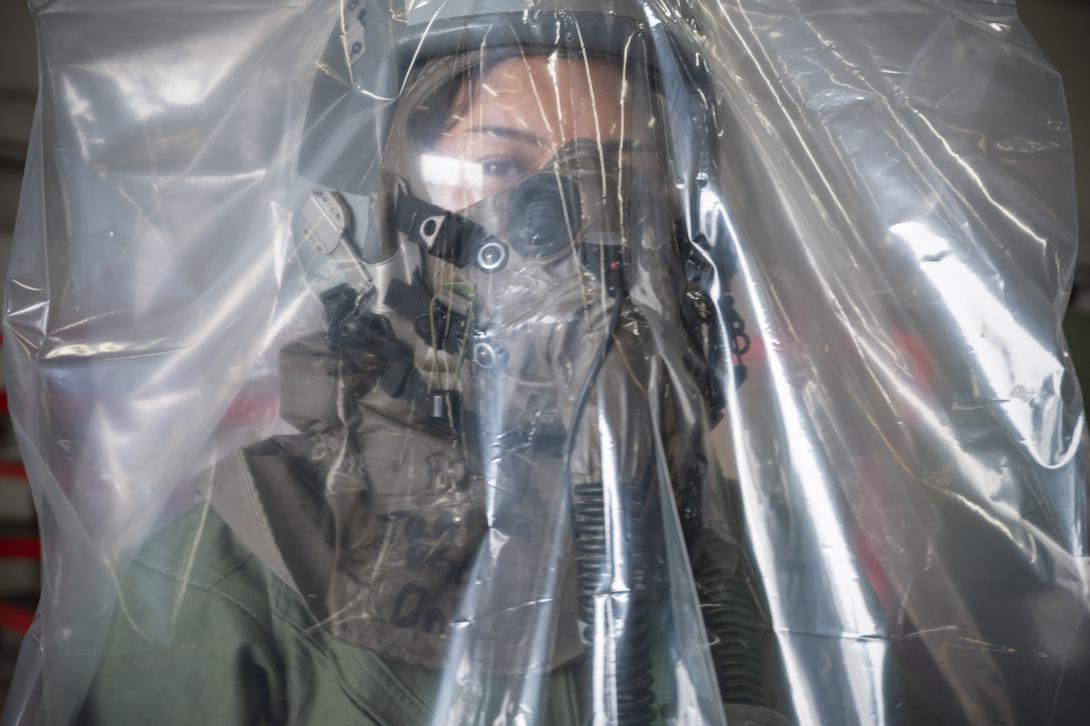Biotechnology: The Deadly Weaponization of Life
Using biological agents as weapons is illegal, but an organism that scientists lawfully use for genuine research could be repurposed for an attack. Therefore, what is banned depends on what an actor plans to do rather than the actual pathogens.
“I think using this approach, called the general-purpose criterion, which defines weapons through intent, actually, you have quite a robust way at the international multilateral level of future-proofing the convention,” said James Revill, head of the weapons of mass destruction program at the United Nations Institute for Disarmament Research.
While it’s hard to assess the intentions of a malicious actor, international consensus leans toward not using biological agents as weapons.
“There is something potentially psychological which does make biological weapons a bit different and which feeds into this taboo on the hostile use of biology,” Revill told SIGNAL Media in an interview.
With the emergence of biotechnology, these considerations become murkier. Efficient manipulation of an organism’s DNA can produce more lethal agents leveraging recent scientific advances. In lieu of this, the International Committee of the Red Cross (ICRC), an international organization, urged all countries to renounce this potential path to novel weapons of mass destruction.
“The ICRC urges States to adopt at a high political level an international Declaration on ‘Biotechnology, Weapons and Humanity’ containing a renewed commitment to existing norms and specific commitments to future preventive action,” said a 2002 document by the institution.
Leveraging biotechnology could be a new, more terrorizing form of adopting technologies for greater destruction. Nevertheless, for one specialist, this is only another iteration of the age-old weaponization of life.
“There are no biotechnological weapons. They don’t exist. It’s biological weapons,” explained Sonia Ben Ouagrham-Gormley, deputy director of the biodefense program at George Mason University.
In an interview with SIGNAL Media, Ben Ouagrham-Gormley explained that among other methods, biotechnology is a technique employed to develop a weapon that a malign actor could use to obtain a hazardous agent.
An artificial intelligence (AI) company specializing in drug development recently assessed whether its tools could develop lethal chemical or biological agents. In an overnight experiment, the machine designed 40,000 substances.
“All it took was a bit of programming, open-source data, a 2015 Mac computer and less than six hours of machine time,” claimed an article in Scientific American.
Similar assertions have surfaced around biological agents.
The ICRC urges action, claiming that “it’s never been easier to develop and use biological weapons. An attacker could use diseases such as flu or Ebola.”
Malign actors sought to weaponize organisms, including anthrax, in the past, but intentions lie far from achievement, according to one researcher, as scaling production poses different challenges from developing a pathogen in paper or digital form or as a small culture in a lab.
“A technology does not imply a specific result. A technology is a tool,” Ben Ouagrham-Gormley said.
As new techniques emerge and facilitate processes that malicious actors could leverage, nature never changes. Organisms must stay alive and be deployed in accordance with requirements that include temperature, humidity and a series of other variables that affect the survival of these agents.
“What matters to produce biological weapons is not so much the technology, but the expertise in knowing how to work with those bioagents,” Ben Ouagrham-Gormley explained.
Developing an aggressive organism or toxin is only one part of the equation. Production, storage, transport and deployment require knowledge specific to one agent and cannot be transferred to others.
“To produce a biological weapon, you don’t need just one person; you need a team who has skills in different stages of processing the agent,” Ben Ouagrham-Gormley said.
Therefore, if a terrorist group manipulates a specific virus, it needs specialists that will most likely only know how to work with that specific pathogen, according to Ben Ouagrham-Gormley. In case this malicious actor chooses another microbe, they should find different willing specialists.
“If you are an expert in smallpox, which is caused by a virus, it doesn’t mean that your expertise will transfer to another virus because they behave completely differently,” Ben Ouagrham-Gormley said. And even if a state or nonstate actor successfully researches, produces and readies an agent for deployment, there is one final hurdle.
“Things designed to deliberately deliver and disseminate biological agents for hostile purposes, they’re prohibited entirely,” Revill said. This means that the complex apparatus to produce and deliver biological agents is hard to source, as they have multiple interlocking legal regimes limiting their production and exchange.
Still, if an actor is malign and smart enough to surmount every obstacle, they could open Pandora’s Box. At the end of the day, life lives under its own rules.
“The biggest challenge is the agent is unpredictable,” Ben Ouagrham-Gormley said.






Comments